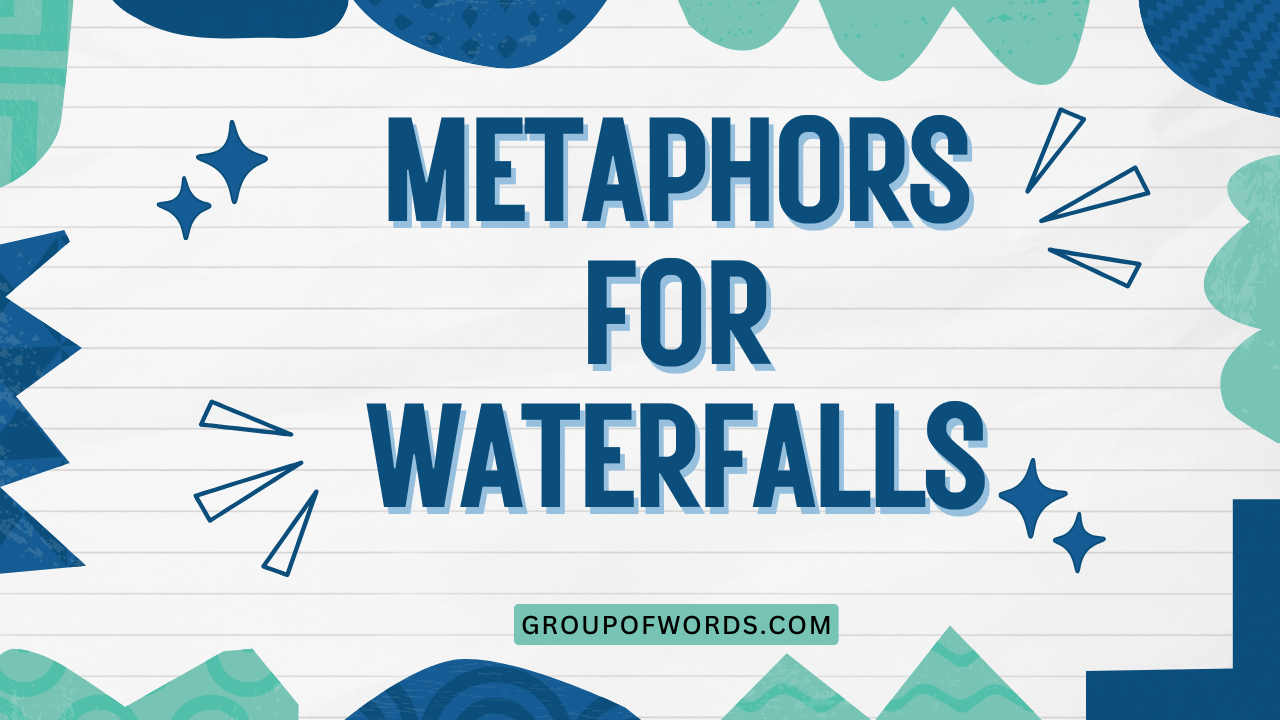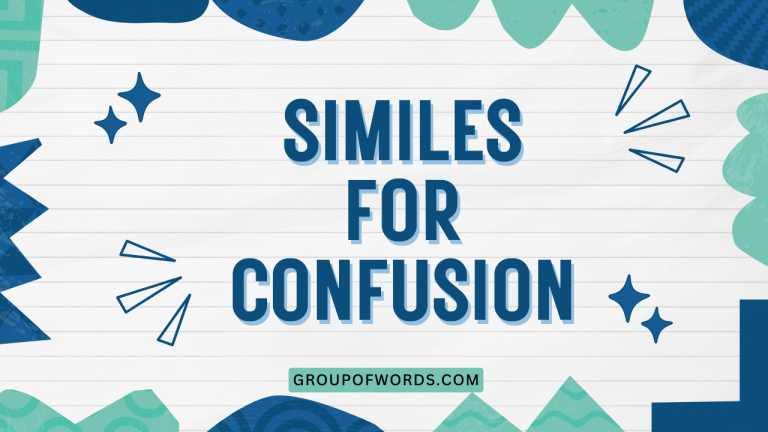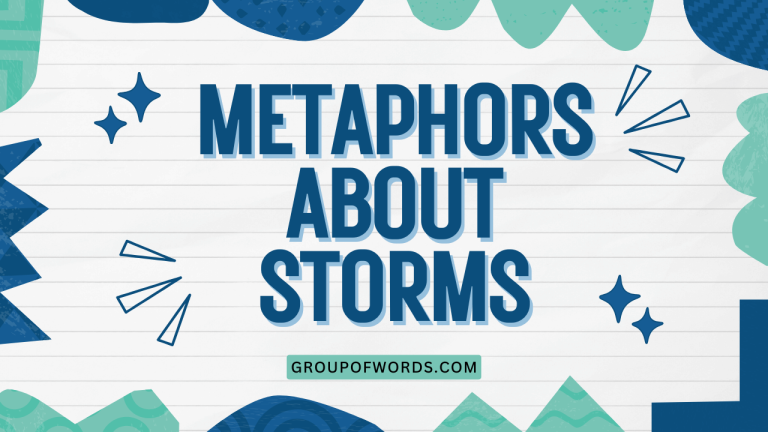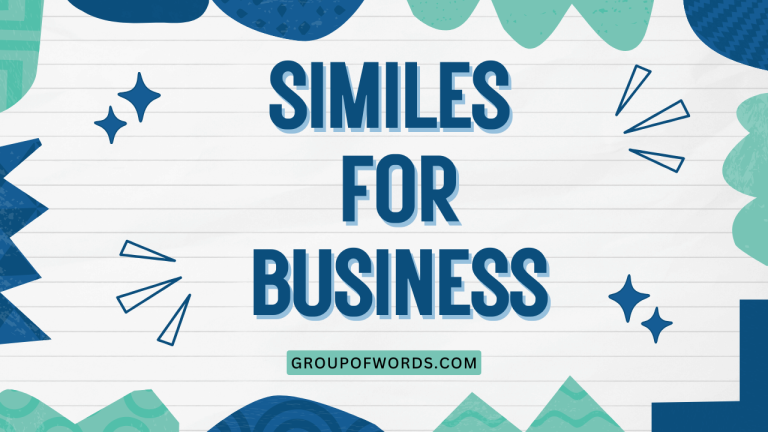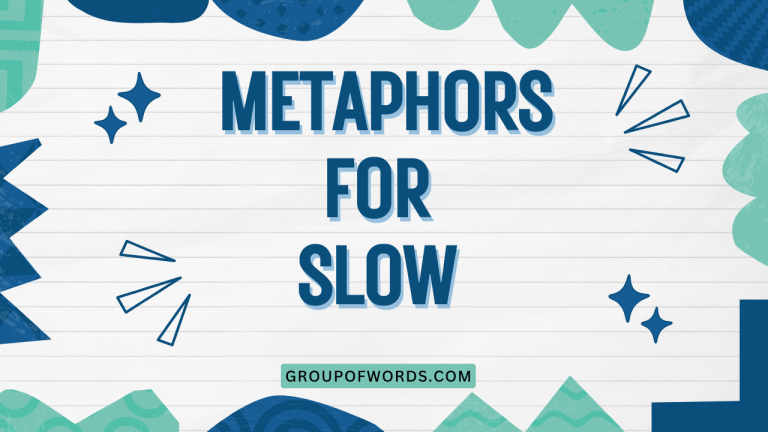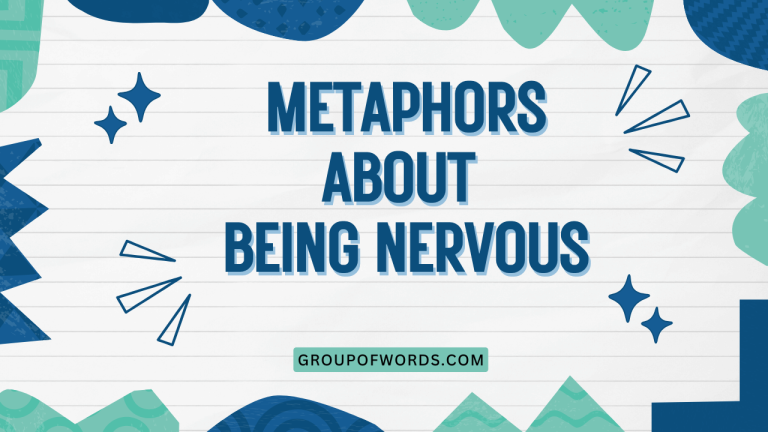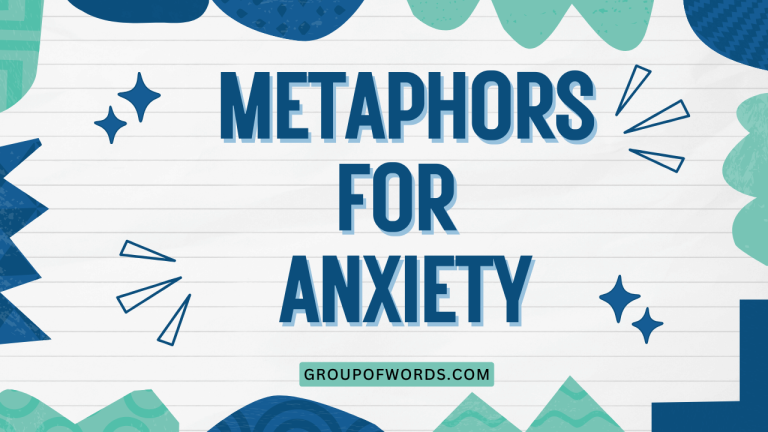Cascading Concepts: Mastering Metaphors for Waterfalls
Waterfalls, with their awe-inspiring power and serene beauty, have captivated human imagination for centuries. As such, they frequently appear in literature, poetry, and everyday conversation, often described through the use of metaphors.
Understanding how metaphors are used to depict waterfalls not only enriches our appreciation of language but also enhances our ability to communicate vividly and creatively. This article delves into the art of crafting and interpreting waterfall metaphors, providing a comprehensive guide for language learners, writers, and anyone fascinated by the intersection of nature and language.
This guide is designed to equip you with the knowledge and skills to effectively understand and utilize metaphors for waterfalls in your own writing and speech. Whether you are a student seeking to improve your descriptive writing, a writer aiming to add depth to your prose, or simply an enthusiast of the English language, this article offers valuable insights and practical exercises to master this expressive aspect of grammar.
Table of Contents
- Introduction
- What is a Metaphor for a Waterfall?
- Structural Breakdown of Waterfall Metaphors
- Types and Categories of Waterfall Metaphors
- Examples of Waterfall Metaphors
- Usage Rules for Waterfall Metaphors
- Common Mistakes with Waterfall Metaphors
- Practice Exercises
- Advanced Topics in Waterfall Metaphors
- Frequently Asked Questions
- Conclusion
What is a Metaphor for a Waterfall?
A metaphor for a waterfall is a figure of speech that compares a waterfall to something else, without using “like” or “as,” to suggest a similarity between them. This comparison is not literal but rather symbolic, aiming to create a more vivid or insightful understanding of the waterfall’s characteristics.
Metaphors tap into our existing knowledge and associations, allowing us to perceive waterfalls in new and imaginative ways.
For instance, describing a waterfall as a “curtain of diamonds” doesn’t mean it’s literally made of diamonds. Instead, it evokes the sparkling, shimmering appearance of the water as it falls, suggesting its beauty and preciousness.
The effectiveness of a metaphor lies in its ability to create a strong image or feeling in the reader’s mind.
Classification of Waterfall Metaphors
Waterfall metaphors can be classified based on the aspect of the waterfall they emphasize. Some focus on the visual elements, such as the color, shape, or texture of the water.
Others highlight the sound, describing the roar, whisper, or rhythm of the cascading water. Still others concentrate on the movement, portraying the flow as a dance, a plunge, or a cascade.
Finally, some metaphors emphasize the power and force of the waterfall. The classification helps in understanding the different ways a waterfall can be metaphorically represented.
Consider, for example, a metaphor like “the waterfall’s roar was a symphony of nature.” Here, the classification would fall under the category of sound, as it directly relates the auditory experience of the waterfall to the musical composition of a symphony. Understanding these classifications enables a more nuanced appreciation and application of metaphorical language.
Function of Waterfall Metaphors
The primary function of a waterfall metaphor is to enhance description and evoke emotion. By comparing a waterfall to something familiar, writers can create a more relatable and impactful image for the reader.
Metaphors can also add layers of meaning, suggesting deeper themes or ideas associated with the waterfall, such as its power, beauty, or the passage of time. In essence, they transform a simple description into a richer, more meaningful experience.
For example, if a waterfall is described as “nature’s tears,” it not only describes the visual element of falling water but also evokes a feeling of sadness or mourning. This metaphorical function adds emotional depth to the description, making it more resonant and memorable for the audience.
Contexts for Using Waterfall Metaphors
Waterfall metaphors are commonly used in various contexts, including literature, poetry, travel writing, and even everyday conversation. In literature and poetry, they add depth and symbolism to descriptions of natural landscapes.
In travel writing, they help to convey the unique experience of witnessing a waterfall. In casual conversation, they can make descriptions more engaging and memorable.
The choice of metaphor depends on the specific context and the desired effect.
Imagine a travel blogger writing about a recent visit to a waterfall. They might use a metaphor like “the waterfall was a liquid staircase to the heavens” to capture the awe and wonder of the experience.
This usage is appropriate because it adds a sense of grandeur and transcendence to the description, aligning with the context of sharing an extraordinary travel experience.
Structural Breakdown of Waterfall Metaphors
The structure of a waterfall metaphor typically involves two key elements: the **tenor** and the **vehicle**. The tenor is the subject being described (in this case, the waterfall), while the vehicle is the object or concept to which it is being compared.
The connection between the tenor and vehicle is not literal but relies on shared qualities or associations. Understanding this structure is crucial for both creating and interpreting metaphors effectively.
For example, in the metaphor “the waterfall was a roaring beast,” the **tenor** is the waterfall, and the **vehicle** is a roaring beast. The shared quality is the loud, powerful sound.
The metaphor works because it highlights the waterfall’s noise and force, making it seem more alive and formidable.
Types and Categories of Waterfall Metaphors
Waterfall metaphors can be categorized based on the specific aspects of the waterfall they emphasize. These categories help to organize and understand the different ways in which waterfalls can be metaphorically described.
By exploring these categories, writers can broaden their range of descriptive options and create more nuanced and evocative imagery.
Metaphors Describing Appearance
These metaphors focus on the visual aspects of the waterfall, such as its color, shape, texture, and light. They often compare the waterfall to objects or substances that share similar visual qualities, creating a vivid mental image for the reader.
These metaphors help to paint a clear picture of what the waterfall looks like.
Examples include: “a veil of silver,” “a curtain of white lace,” or “a cascade of liquid glass.” These metaphors highlight the waterfall’s appearance, evoking images of delicate beauty, shimmering light, and smooth, flowing textures.
Metaphors Describing Sound
These metaphors emphasize the auditory experience of the waterfall, focusing on the sounds it produces, such as its roar, whisper, or echo. They often compare the waterfall’s sound to musical instruments, natural phenomena, or animal noises, creating an auditory image for the reader.
These metaphors bring the waterfall to life through sound.
Examples include: “a thunderous applause,” “nature’s symphony,” or “a roaring beast.” These metaphors capture the range of sounds a waterfall can produce, from the gentle murmur to the powerful roar, allowing readers to “hear” the waterfall in their minds.
Metaphors Describing Movement
These metaphors focus on the way the water moves as it falls, such as its speed, flow, and trajectory. They often compare the waterfall’s movement to dances, leaps, or other dynamic actions, creating a sense of energy and motion.
These metaphors capture the dynamic nature of the waterfall.
Examples include: “a liquid dance,” “a plunging arrow,” or “a cascading river of dreams.” These metaphors highlight the different ways water can move, from graceful and flowing to swift and direct, adding a sense of dynamism to the description.
Metaphors Describing Power
These metaphors emphasize the force and energy of the waterfall, highlighting its ability to erode rock, generate mist, and create a sense of awe. They often compare the waterfall’s power to natural forces, mythical creatures, or industrial machines, conveying its immense strength.
These metaphors underline the raw power of the waterfall.
Examples include: “nature’s hammer,” “a liquid titan,” or “an untamed beast.” These metaphors convey the sheer power and force of the waterfall, emphasizing its ability to shape the landscape and command respect.
Metaphors Evoking Emotion
These metaphors aim to evoke specific emotions in the reader, such as awe, wonder, sadness, or peace. They often compare the waterfall to emotional states, human experiences, or symbolic objects, creating a connection between the natural world and human feelings.
These metaphors add emotional depth to the description of the waterfall.
Examples include: “nature’s tears,” “a fountain of hope,” or “a cascade of serenity.” These metaphors connect the waterfall to human emotions, allowing readers to experience the waterfall on a deeper, more personal level.
Examples of Waterfall Metaphors
The following sections provide extensive examples of waterfall metaphors, organized by category. Each example illustrates how a different aspect of the waterfall can be metaphorically represented, offering a wide range of options for descriptive writing.
Appearance Metaphors Examples
This table provides examples of metaphors that describe the appearance of waterfalls, focusing on visual elements such as color, shape, and texture. Each metaphor aims to create a vivid mental image of the waterfall’s visual characteristics.
| Metaphor | Explanation |
|---|---|
| A veil of silver | Describes the shimmering, silvery appearance of the water as it falls. |
| A curtain of white lace | Evokes the delicate, intricate texture of the water, resembling lace. |
| A cascade of liquid glass | Highlights the smooth, transparent quality of the water. |
| A river of diamonds | Emphasizes the sparkling, brilliant appearance of the water. |
| A frozen moment in time | Captures the fleeting, yet seemingly still, appearance of the waterfall. |
| A white ribbon against the rocks | Describes the long, narrow shape of the waterfall against the dark rocks. |
| Nature’s paintbrush | Suggests the artistic and colorful display of the waterfall. |
| A liquid sculpture | Highlights the sculpted, shaped appearance of the water. |
| A shimmering sheet | Describes the broad, flat appearance of the water. |
| A crystal staircase | Evokes the clear, sparkling appearance of the water as it descends. |
| A flowing mirror | Reflects the surrounding landscape, creating a mirror-like effect. |
| A cascade of pearls | Describes the rounded, shimmering appearance of the water droplets. |
| A liquid rainbow | Captures the colorful refraction of light in the water. |
| A tapestry of water | Highlights the interwoven, textured appearance of the water. |
| A silvery thread | Describes the thin, delicate appearance of the waterfall. |
| A flowing cloud | Evokes the soft, billowy appearance of the water. |
| A liquid moonbeam | Captures the soft, ethereal light reflected in the water. |
| A cascade of light | Emphasizes the bright, luminous appearance of the water. |
| A liquid blanket | Describes the way the water covers the rocks like a blanket. |
| A frozen river | Suggests the stillness and beauty of the waterfall. |
| A white cascade | Simple, yet effective, highlighting the color and flow. |
| Nature’s tears | Evokes a sense of sadness or beauty in its appearance. |
| A liquid diamond | Combines flow with preciousness and brilliance. |
| A flowing crystal | Emphasizes clarity and purity in its appearance. |
| A white waterfall | Directly describes the color, simple and effective. |
| A shining ribbon | Elegant and evocative, highlighting light and shape. |
Sound Metaphors Examples
This table provides examples of metaphors that describe the sound of waterfalls, focusing on auditory elements such as roar, whisper, and echo. Each metaphor aims to create an auditory image of the waterfall’s sound.
| Metaphor | Explanation |
|---|---|
| A thunderous applause | Describes the loud, booming sound of the waterfall. |
| Nature’s symphony | Evokes the complex, harmonious sounds of the waterfall. |
| A roaring beast | Highlights the powerful, aggressive sound of the waterfall. |
| A liquid roar | Emphasizes the continuous, loud sound of the water. |
| A whispering giant | Contrasts the size of the waterfall with its surprisingly gentle sound. |
| The earth’s heartbeat | Implies a deep, resonant sound that echoes through the landscape. |
| A chorus of nature | Suggests the harmonious blend of sounds from the waterfall and its surroundings. |
| Liquid thunder | Combines the visual of water with the auditory of thunder to emphasize power. |
| A constant murmur | Highlights the gentle, continuous sound of the waterfall. |
| The voice of the mountain | Implies a powerful, commanding sound that resonates through the landscape. |
| A liquid song | Evokes the melodic, flowing sound of the waterfall. |
| A constant drone | Describes a steady, monotonous sound. |
| Nature’s orchestra | Highlights the complexity and harmony of the waterfall’s sounds. |
| A watery scream | Emphasizes the high-pitched, piercing sound of the waterfall. |
| A rumbling giant | Describes the deep, vibrating sound of the waterfall. |
| The mountain’s whisper | Suggests a soft, gentle sound that carries through the air. |
| A liquid echo | Highlights the reverberating sound of the waterfall. |
| A steady hum | Describes a continuous, low-pitched sound. |
| Nature’s lullaby | Evokes a soothing, calming sound. |
| A rushing whisper | Contrasts the speed of the water with its gentle sound. |
| A liquid shout | Emphasizes the loud, commanding sound of the water. |
| A constant roar | Simple, yet effective, highlighting the continuous loud sound. |
| Nature’s music | A broad term that captures the harmonious aspect. |
| A watery echo | Highlights the reverberating qualities of the sound. |
| A rumbling whisper | A paradox that suggests a deep, yet soft sound. |
| A booming voice | Emphasizes power and resonance. |
Movement Metaphors Examples
This table provides examples of metaphors that describe the movement of waterfalls, focusing on elements such as speed, flow, and trajectory. Each metaphor aims to create a sense of energy and motion.
| Metaphor | Explanation |
|---|---|
| A liquid dance | Describes the graceful, flowing movement of the water. |
| A plunging arrow | Highlights the swift, direct movement of the water. |
| A cascading river of dreams | Evokes a sense of flowing, ethereal movement. |
| A liquid leap | Emphasizes the sudden, energetic movement of the water. |
| A flowing avalanche | Highlights the overwhelming, powerful movement of the water. |
| A dancing river | Suggests a playful, lively movement. |
| Liquid flight | Emphasizes the weightless, soaring movement of the water. |
| A rushing torrent | Highlights the fast, turbulent movement of the water. |
| A flowing tapestry | Evokes the interwoven, complex movement of the water. |
| A liquid waterfall | Simple but emphasizes the very nature of the water’s movement. |
| A constant flow | Highlights the uninterrupted movement of the water. |
| A never-ending stream | Emphasizes the continuous, perpetual movement of the water. |
| A liquid cascade | Describes the falling, tumbling movement of the water. |
| A flowing stream | Simple but effective in describing the movement. |
| A plunging waterfall | Highlights the dramatic, downward movement of the water. |
| A never-stopping river | Emphasizes the relentless, continuous movement of the water. |
| A liquid arrow | Highlights the swift, direct movement of the water. |
| A flowing cloud | Evokes the soft, billowy movement of the water. |
| A rushing river | Emphasizes the fast, energetic movement of the water. |
| A liquid cascade | Highlights the falling, tumbling movement of the water. |
| A flowing avalanche | Emphasizes the powerful, overwhelming movement of the water. |
| A never-ending waterfall | Highlights the continuous, perpetual movement. |
| A liquid dance | Elegant and captures grace in motion. |
| A plunging torrent | Emphasizes swiftness and power. |
| A waterfall flight | Suggests a soaring, almost weightless descent. |
| A rushing cascade | Combines speed with tumbling motion. |
Power Metaphors Examples
This table provides examples of metaphors that describe the power of waterfalls, focusing on elements such as force, energy, and impact. Each metaphor aims to convey the immense strength of the waterfall.
| Metaphor | Explanation |
|---|---|
| Nature’s hammer | Emphasizes the forceful, destructive power of the waterfall. |
| A liquid titan | Highlights the immense size and strength of the waterfall. |
| An untamed beast | Evokes the wild, uncontrollable power of the waterfall. |
| A force of nature | Highlights the raw, elemental power of the waterfall. |
| A liquid earthquake | Emphasizes the disruptive, earth-shaking power of the waterfall. |
| A powerful rush | Emphasizes the forceful, energetic nature of the water. |
| A constant force | Highlights the relentless, unwavering power of the waterfall. |
| A liquid beast | Evokes the wild, untamed power of the waterfall. |
| Nature’s strength | Highlights the raw, elemental power of the waterfall. |
| A never-ending force | Emphasizes the continuous, perpetual power of the waterfall. |
| A powerful cascade | Highlights the forceful, tumbling power of the waterfall. |
| A liquid hammer | Emphasizes the forceful, destructive nature of the water. |
| An untamed torrent | Evokes the wild, uncontrollable power of the waterfall. |
| A force of water | Highlights the raw, elemental power of the waterfall. |
| A never-ending torrent | Emphasizes the continuous, perpetual power of the waterfall. |
| A liquid earthquake | Highlights the disruptive, earth-shaking power of the water. |
| Nature’s surge | Emphasizes the powerful, energetic nature of the waterfall. |
| A liquid power | Highlights the raw, elemental power of the waterfall. |
| An untamed force | Evokes the wild, uncontrollable power of the waterfall. |
| A never-ending surge | Emphasizes the continuous, perpetual power of the waterfall. |
| A liquid titan | Highlights the immense size and strength. |
| Nature’s fury | Emphasizes the destructive potential. |
| A powerful giant | Highlights size and strength combined. |
| A constant surge | Highlights continuous energy. |
| An endless hammer | Emphasizes relentless force. |
| Liquid thunder | Combines sound and power. |
Emotion Metaphors Examples
This table provides examples of metaphors that evoke specific emotions associated with waterfalls, such as awe, wonder, sadness, or peace. Each metaphor aims to create a connection between the natural world and human feelings.
| Metaphor | Explanation |
|---|---|
| Nature’s tears | Evokes a feeling of sadness or mourning. |
| A fountain of hope | Highlights the potential for renewal and optimism. |
| A cascade of serenity | Evokes a sense of peace and tranquility. |
| A liquid joy | Emphasizes the feeling of happiness and elation. |
| Nature’s whisper of peace | Evokes a sense of calm and tranquility. |
| A fountain of dreams | Highlights the potential for imagination and aspiration. |
| A cascade of wonder | Evokes a sense of awe and amazement. |
| A liquid solace | Emphasizes the feeling of comfort and relief. |
| Nature’s sigh | Evokes a feeling of sadness or resignation. |
| A fountain of inspiration | Highlights the potential for creativity and motivation. |
| A cascade of magic | Evokes a sense of enchantment and wonder. |
| Nature’s comfort | Emphasizes the feeling of solace and reassurance. |
| A cascade of hope | Highlights the potential for optimism and renewal. |
| A liquid dream | Emphasizes the feeling of peace and escape. |
| A fountain of peace | Highlights the potential for tranquility and harmony. |
| A cascade of joy | Evokes a sense of happiness and elation. |
| Nature’s song of peace | Evokes a feeling of calm and tranquility. |
| A liquid sigh | Emphasizes the feeling of sadness or resignation. |
| A fountain of magic | Highlights the potential for enchantment and wonder. |
| A cascade of solace | Evokes a feeling of comfort and relief. |
| Nature’s tears of joy | Expresses overwhelming happiness. |
| A fountain of dreams | Symbolizes aspiration and potential. |
| A cascade of tranquility | Emphasizes calmness and peace. |
| A liquid hope | Embodies optimism and renewal. |
| Nature’s lullaby | Evokes a sense of calm and comfort. |
| A fountain of wonder | Inspires awe and amazement. |
Usage Rules for Waterfall Metaphors
Using waterfall metaphors effectively requires attention to detail and adherence to certain guidelines. These rules ensure that the metaphors are clear, relevant, and impactful, enhancing rather than detracting from the writing.
Clarity and Relevance
A good waterfall metaphor should be easily understandable and directly related to the aspect of the waterfall being described. Avoid metaphors that are too abstract or obscure, as they can confuse the reader and weaken the impact of the description.
The connection between the tenor and vehicle should be clear and logical.
For example, “the waterfall was a roaring beast” is clear because the association between the loud sound of the waterfall and the roar of a beast is easily understood. However, “the waterfall was a purple sunset” is less clear because the connection between the two is not immediately apparent and may require further explanation.
Originality and Impact
While it’s tempting to use common metaphors, striving for originality can make your writing more memorable and impactful. A fresh, unexpected metaphor can capture the reader’s attention and provide a new perspective on the waterfall.
However, ensure that the originality does not compromise clarity.
Instead of saying “the waterfall was a curtain of water,” try something more original like “the waterfall was a liquid staircase to the heavens.” The latter metaphor is more evocative and memorable because it presents a unique and imaginative image.
Consistency and Tone
Maintain consistency in the use of metaphors throughout your writing. Avoid mixing metaphors that clash or create contradictory images.
The tone of the metaphors should also align with the overall tone of the piece. A somber description should use metaphors that evoke sadness or seriousness, while a celebratory description should use metaphors that evoke joy or excitement.
For example, if you’re describing a serene waterfall, avoid using metaphors that suggest violence or aggression. Instead, opt for metaphors that convey peace and tranquility, such as “a cascade of serenity” or “nature’s lullaby.”
Common Mistakes with Waterfall Metaphors
Even experienced writers can make mistakes when using metaphors. Recognizing these common errors can help you avoid them and improve the quality of your writing.
The most frequent mistakes include mixed metaphors, clichéd metaphors, and inappropriate metaphors.
Mixed Metaphors: Combining two or more metaphors that create a confusing or contradictory image.
*Incorrect:* “The waterfall was a roaring beast that painted a picture of serenity.”
*Correct:* “The waterfall was a roaring beast.” OR “The waterfall painted a picture of serenity.”
Clichéd Metaphors: Using overused metaphors that have lost their impact and originality.
*Incorrect:* “The waterfall was a curtain of water.”
*Correct:* “The waterfall was a liquid staircase to the heavens.”
Inappropriate Metaphors: Using metaphors that do not fit the context or tone of the writing.
*Incorrect:* “The waterfall was a chaotic battlefield.” (when describing a peaceful waterfall)
*Correct:* “The waterfall was a cascade of serenity.”
Practice Exercises
These exercises are designed to help you practice identifying, creating, and rewriting sentences with waterfall metaphors. By completing these exercises, you can reinforce your understanding of the concepts and improve your ability to use waterfall metaphors effectively.
Identifying Waterfall Metaphors
Identify the waterfall metaphor in each sentence and explain its meaning.
| Question | Answer |
|---|---|
| 1. The waterfall was nature’s tears, flowing endlessly down the cliff. | Metaphor: nature’s tears. Meaning: The waterfall is being compared to tears, evoking a sense of sadness or beauty. |
| 2. The cascading water was a liquid dance, graceful and mesmerizing. | Metaphor: liquid dance. Meaning: The movement of the water is being compared to a dance, highlighting its grace and fluidity. |
| 3. The waterfall roared like a beast, its power shaking the ground. | Metaphor: roared like a beast. Meaning: The sound of the waterfall is being compared to the roar of a beast, emphasizing its power and intensity. |
| 4. The waterfall was a shimmering veil, hiding the secrets of the forest. | Metaphor: shimmering veil. Meaning: The appearance of the waterfall is being compared to a veil, highlighting its delicate and mysterious quality. |
| 5. The waterfall was a liquid staircase to the heavens, inviting the soul to ascend. | Metaphor: liquid staircase to the heavens. Meaning: The waterfall is being compared to a staircase leading to a higher spiritual realm, evoking a sense of transcendence. |
| 6. The waterfall sang a song, a melody of nature’s own. | Metaphor: sang a song. Meaning: The sound is likened to a melody, emphasizing its harmonious quality. |
| 7. The waterfall was a liquid rainbow, capturing every color of the sky. | Metaphor: liquid rainbow. Meaning: Its appearance is compared to a rainbow, emphasizing its colorful and vibrant nature. |
| 8. The waterfall acted as nature’s hammer, reshaping the rocks below. | Metaphor: nature’s hammer. Meaning: The action of the water is likened to a hammer, emphasizing its force and impact. |
| 9. The waterfall offered peace, a cascade of serenity. | Metaphor: cascade of serenity. Meaning: The feeling of peace is linked to the waterfall. |
| 10. The waterfall was the constant surge, the never ending power. | Metaphor: constant surge. Meaning: The waterfall has constant and unending power. |
Creating Waterfall Metaphors
Create a waterfall metaphor for each of the following prompts:
| Prompt | Answer |
|---|---|
| 1. Describe the sound of a powerful waterfall. | The waterfall’s roar was a thunderous applause from the mountains. |
| 2. Describe the appearance of a delicate
waterfall. |
The delicate waterfall was a veil of shimmering silk. |
| 3. Describe the movement of a swift waterfall. | The swift waterfall was a plunging arrow aimed at the heart of the pool. |
| 4. Describe the power of a massive waterfall. | The massive waterfall was nature’s untamed titan, reshaping the landscape with its might. |
| 5. Describe the feeling of standing near a serene waterfall. | Standing near the serene waterfall was like bathing in nature’s tranquility. |
| 6. Describe the way a waterfall glistens in the sun. | Glistening in the sun, the waterfall was a river of liquid diamonds. |
| 7. Describe a waterfall at night under the moonlight. | Under the moonlight, the waterfall was a cascade of liquid moonbeams. |
| 8. Describe the way a waterfall carves through rock. | The waterfall was a relentless sculptor, carving its story into the stone. |
| 9. Describe how a waterfall can inspire you. | The waterfall was a fountain of inspiration, sparking creativity with every drop. |
| 10. Describe the feeling of being close to a waterfall | Being close to the waterfall was like standing in nature’s cathedral, awash in its majesty. |
Rewriting with Waterfall Metaphors
Rewrite the following sentences using a waterfall metaphor to enhance the description.
| Original Sentence | Rewritten Sentence with Waterfall Metaphor |
|---|---|
| 1. The waterfall was very loud. | The waterfall was a roaring beast, its voice echoing through the valley. |
| 2. The waterfall looked beautiful. | The waterfall was a shimmering curtain of silver, a breathtaking sight. |
| 3. The waterfall moved quickly. | The waterfall was a plunging arrow, swiftly descending into the pool below. |
| 4. The waterfall was extremely powerful. | The waterfall was nature’s hammer, pounding the rocks with relentless force. |
| 5. The waterfall was peaceful. | The waterfall was a cascade of serenity, bringing calm to the surrounding forest. |
| 6. The water fell gracefully. | The water fell, a liquid dance of grace and beauty. |
| 7. The sight of the water was inspiring. | The sight of the water was a fountain of inspiration, igniting the imagination. |
| 8. The water was pure and clear. | The water was a flowing crystal, pure and untouched. |
| 9. The waterfall created a mist. | The waterfall created a misty veil, a mystical shroud around its base. |
| 10. The water sounded like music. | The water sang, a melody of nature which resonated from the rocks. |
Advanced Topics in Waterfall Metaphors
Beyond the basics, there are advanced techniques for using waterfall metaphors that can elevate your writing to a higher level. These include extended metaphors, mixed metaphors (which should generally be avoided), and the study of waterfall metaphors in literature.
Extended Metaphors
An extended metaphor is a metaphor that is developed over several lines or paragraphs. Instead of a brief comparison, the writer elaborates on the similarities between the waterfall and the vehicle, creating a more detailed and immersive image.
This technique can add depth and complexity to your writing, allowing you to explore the metaphorical connection in greater detail.
For example, instead of simply saying “the waterfall was nature’s tears,” you could extend the metaphor by describing how the “tears” flow endlessly, carving paths through the rock like lines on a weathered face, reflecting the sorrow of the earth, and nourishing the life below with their poignant descent. This extended metaphor creates a richer, more evocative image of the waterfall and its emotional significance.
Mixed Metaphors
A mixed metaphor is the combination of two or more incompatible metaphors in a single expression. This often results in a confusing or nonsensical image and should generally be avoided.
While mixed metaphors can sometimes be used intentionally for comedic effect, they are usually a sign of careless writing.
For example, “the waterfall was a roaring beast that painted a picture of serenity” is a mixed metaphor because the image of a roaring beast clashes with the peaceful image of a painted picture. A more effective approach would be to choose one metaphor and develop it consistently, or to use separate metaphors in different sentences.
Waterfall Metaphors in Literature
Many famous writers have used waterfall metaphors to great effect in their works. Studying these examples can provide valuable insights into the art of crafting compelling metaphors and using them to enhance descriptive writing.
Analyzing the works of poets and novelists can show how metaphors contribute to the overall meaning and impact of a literary work.
For instance, consider the use of waterfall imagery in Romantic poetry, where waterfalls often symbolize the power and sublimity of nature. Examining how poets like William Wordsworth and Samuel Taylor Coleridge employ waterfall metaphors can reveal how these images contribute to the themes of inspiration, transcendence, and the relationship between humanity and the natural world.
Frequently Asked Questions
What is the difference between a metaphor and a simile?
A metaphor compares two unlike things without using “like” or “as,” while a simile uses “like” or “as” to make the comparison. For example, “the waterfall was a liquid dance” is a metaphor, while “the waterfall was like a liquid dance” is a simile.
How can I make my waterfall metaphors more original?
To make your metaphors more original, try to think beyond the obvious comparisons. Consider unexpected qualities of the waterfall and look for unique connections to other objects or concepts.
Also, try to avoid clichés and overused metaphors.
Can a waterfall be a symbol as well as a metaphor?
Yes, a waterfall can be both a metaphor and a symbol. As a metaphor, it compares the waterfall to something else to enhance description.
As a symbol, it represents a larger idea or concept, such as power, beauty, or the passage of time.
How do I avoid mixed metaphors when writing about waterfalls?
To avoid mixed metaphors, focus on maintaining a consistent image throughout your writing. Choose one metaphor and develop it fully, rather than combining multiple incompatible images.
Review your writing carefully to identify and correct any mixed metaphors.
Are there any waterfalls that are commonly used in metaphors?
Yes, certain famous waterfalls, such as Niagara Falls and Victoria Falls, are often used in metaphors to represent power, grandeur, and awe-inspiring beauty. These iconic landmarks provide readily recognizable and impactful images for metaphorical comparison.
What emotions are commonly associated with waterfalls?
Common emotions associated with waterfalls include awe, wonder, peace, serenity, sadness, and inspiration. These emotions can be used as a basis for crafting metaphors that evoke specific feelings in the reader.
Can metaphors be used to describe other bodies of water?
Yes, metaphors can be used to describe other bodies of water, such as rivers, lakes, and oceans. The principles and techniques discussed in this article can be applied to any body of water, allowing you to create vivid and evocative descriptions.
Is it okay to use multiple metaphors in one description?
Yes, it is okay to use multiple metaphors in one description, as long as they are consistent and do not create a mixed metaphor. Using a variety of metaphors can add depth and richness to your writing, providing a more comprehensive and nuanced image of the waterfall.
How can I improve my descriptive writing using metaphors?
To improve your descriptive writing using metaphors, practice identifying and creating metaphors regularly. Pay attention to the qualities of the object you are describing and look for unexpected connections to other objects or concepts.
Also, read widely and analyze how other writers use metaphors effectively.
What is the best way to learn how to write good metaphors?
The best way to learn how to write good metaphors is through practice, reading, and feedback. Start by studying examples of well-crafted metaphors in literature and poetry.
Then, experiment with creating your own metaphors and ask for feedback from others. The more you practice, the better you will become at crafting compelling and original metaphors.
Conclusion
Mastering the art of crafting and interpreting waterfall metaphors is a valuable skill for anyone seeking to enhance their descriptive writing and deepen their understanding of language. By understanding the structure, types, and usage rules of waterfall metaphors, you can create vivid and impactful images that resonate with your audience.
Whether you are a student, a writer, or simply an enthusiast of the English language, the knowledge and skills you have gained from this article will empower you to express yourself more creatively and effectively.
Continue to practice identifying, creating, and rewriting sentences with waterfall metaphors. Explore the works of famous writers and analyze how they use metaphors to enhance their descriptions.
With dedication and practice, you can unlock the full potential of metaphorical language and transform your writing into a powerful and evocative art form.
